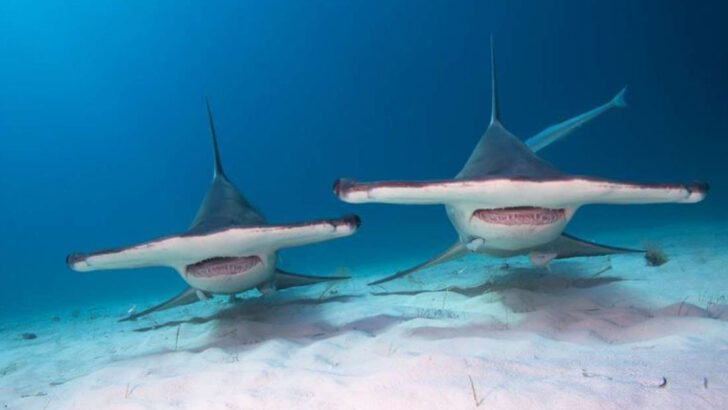Hammerhead sharks are like the rock stars of the ocean—impossible to ignore and full of surprises. With their unmistakable, hammer-shaped heads, they’ve captivated scientists and ocean lovers alike for decades. But there’s so much more to these incredible creatures than meets the eye.
Their unique head structure isn’t just for show. It plays a vital role in their hunting strategy, giving them an edge when it comes to tracking prey. But that’s just the beginning. Hammerheads are far more social than you might think, forming groups called schools, which is something most sharks rarely do.
So, are you ready to uncover the hidden world of hammerhead sharks? From their complex behaviors to their mind-boggling adaptations, these creatures will leave you in awe. Let’s dive into the deep and explore 16 jaw-dropping facts that will change the way you see these incredible ocean predators.
Unusual Head Shape
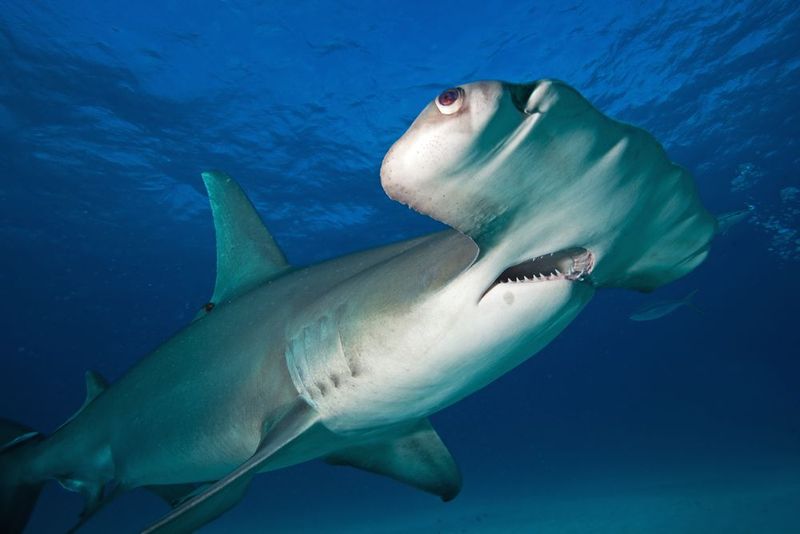
The hammerhead shark’s unique T-shaped head is not just for show; it’s a marvel of evolution. This broad cephalofoil provides enhanced sensory abilities, allowing the shark to detect electric fields produced by prey.
Spread out like wings, the eyes afford a panoramic view, reducing blind spots. In the warm, sun-dappled waters, these sharks glide effortlessly, using their head as a hydrodynamic plane.
The distinctive shape aids in maneuverability, crucial for catching fast-swimming prey. This evolutionary marvel showcases nature’s ingenuity at its finest, adapting form and function in perfect harmony.
Exceptional Vision
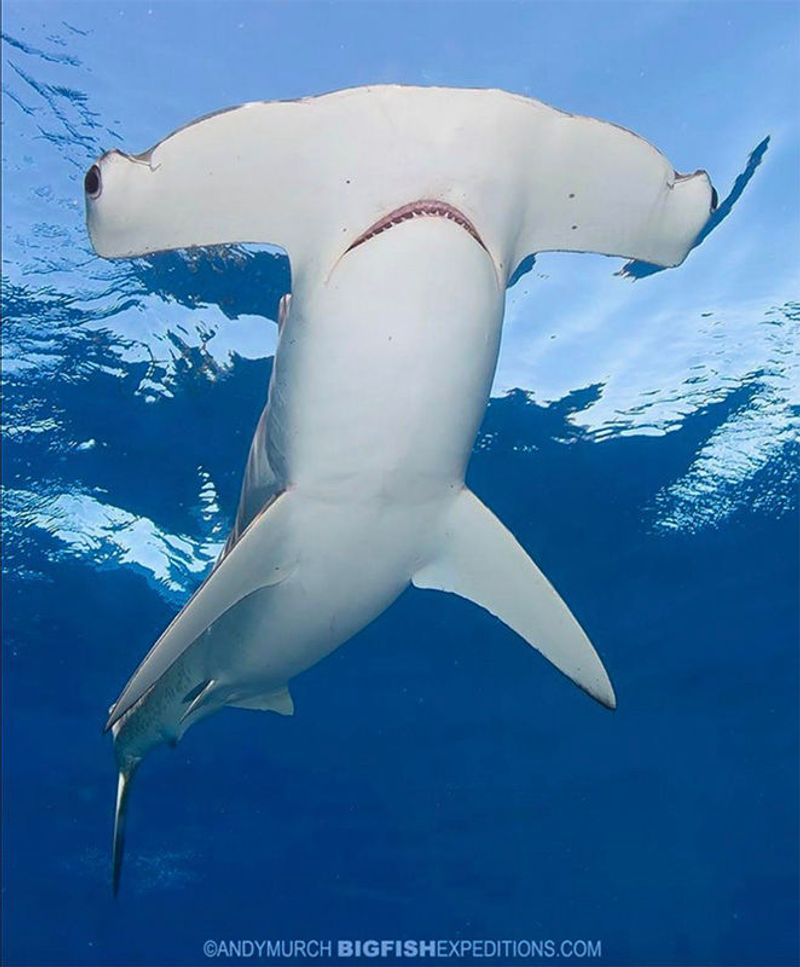
Hammerhead sharks possess exceptional vision thanks to their wide-set eyes. This placement allows for an almost 360-degree field of view, crucial for spotting prey and avoiding predators.
Unlike other sharks, they have binocular vision directly ahead, offering depth perception. In the dim ocean depths, their enhanced eyesight aids in discerning subtle movements, a skill honed over millions of years.
Imagine a vigilant sentinel, ever watchful, navigating the underwater world with precision. The hammerhead’s vision is a testament to the evolutionary arms race that defines marine life.
Social Creatures

Unlike the solitary nature of many shark species, hammerheads are known for their social behavior. They often gather in schools, particularly during the day, forming impressive groups that can number in the hundreds.
These social gatherings aren’t just for safety in numbers. They also play a role in mating and communication within the group. Picture a bustling community under the sea, where interactions are complex and dynamic.
This social nature adds an intriguing layer to the hammerhead’s mystique, as they navigate their world with both independence and camaraderie.
Unique Hunting Techniques
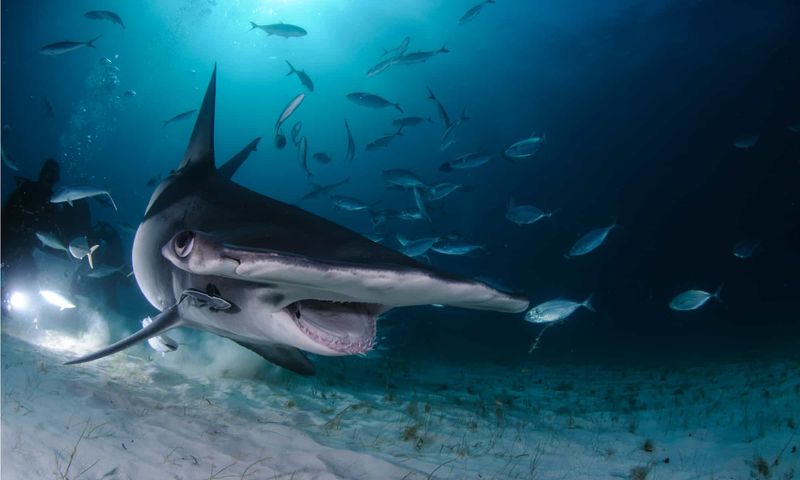
Hammerhead sharks have developed unique hunting techniques, particularly when it comes to hunting stingrays. With their wide, flat heads, they can pin down their prey against the ocean floor.
This method is both efficient and effective, showcasing their adaptability as apex predators. Imagine the thrill of the chase, where strategy meets instinct, and the ocean floor becomes a battleground.
This hunting prowess highlights the hammerhead’s place in the marine food chain, a role defined by cunning and precision.
Complex Brain
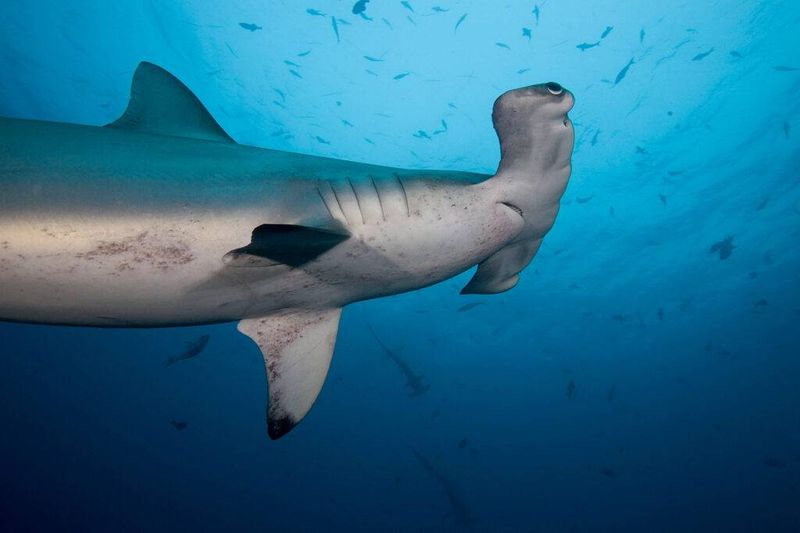
The hammerhead shark’s brain is surprisingly large and complex, relative to its body size. This complexity supports their advanced sensory capabilities and social behaviors.
Scientists believe this neurological sophistication aids in navigation, social interaction, and environmental awareness. Think of the hammerhead as the intellectual of the shark world, with a brain that not only processes sensory input but also coordinates activities within their social groups.
This cerebral prowess sets them apart, emphasizing the intelligence hidden beneath their fearsome appearance.
Magnetic Sense
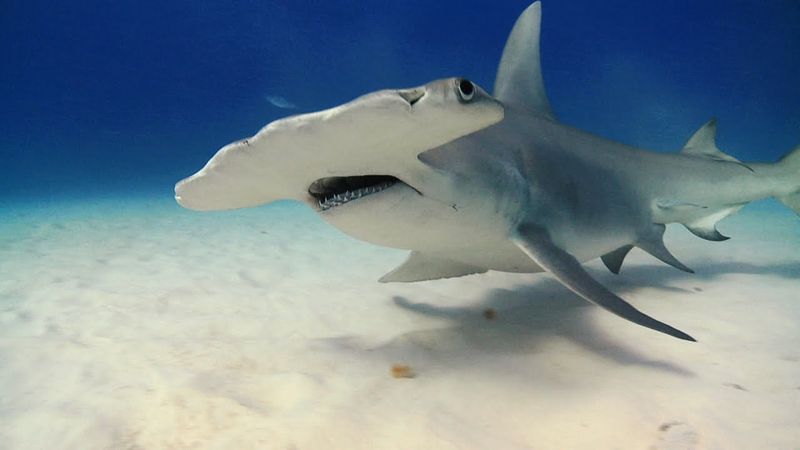
Hammerhead sharks possess a remarkable ability to sense the Earth’s magnetic fields, guiding their long migrations and daily movements. This magnetic sense acts like an internal compass, providing an edge in the vast, featureless ocean.
Envision a natural navigator, seamlessly traversing the deep blue with an unseen guide. This sensory adaptation enables them to travel great distances with precision, underscoring their role as oceanic wanderers.
Their magnetic sense exemplifies the incredible adaptations marine life has developed to thrive in diverse environments.
Diverse Diet
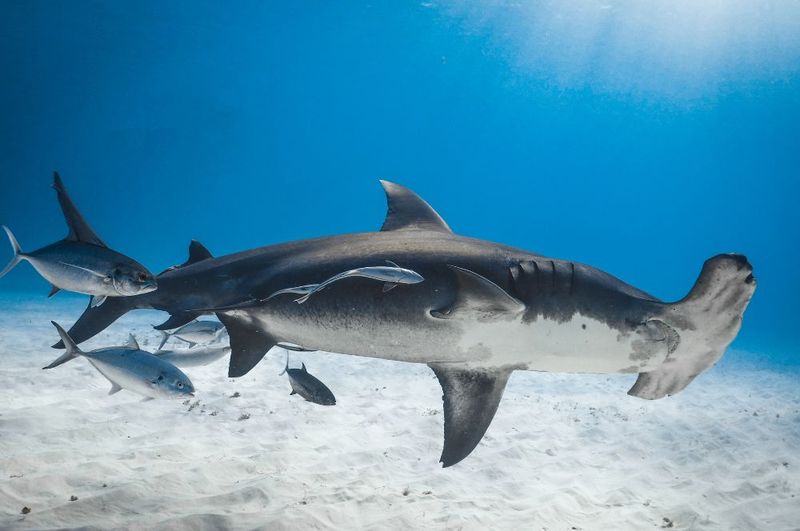
The hammerhead shark’s diet is as varied as the ocean itself. They feed on fish, squid, octopuses, and crustaceans, showcasing their versatility as predators. This diverse diet helps maintain ecological balance, as they regulate prey populations.
In vibrant coral reefs and deep ocean waters, hammerheads demonstrate their adaptability, switching prey based on availability. Picture a culinary explorer, sampling the ocean’s offerings, each bite contributing to the health of marine ecosystems.
Their varied diet highlights the interconnectedness within the aquatic world.
Reproductive Behavior
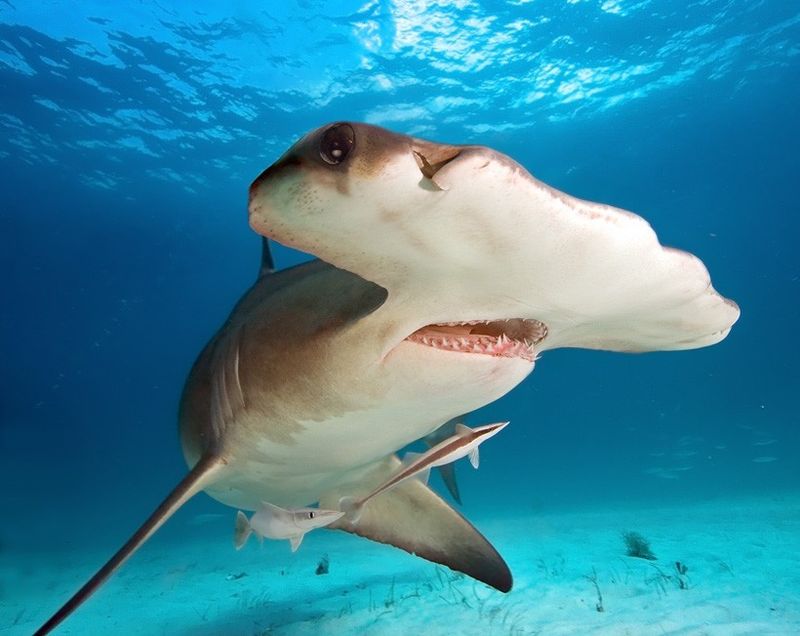
Reproduction in hammerhead sharks is a fascinating process, marked by live birth and nurturing tendencies. Female hammerheads give birth to live young, known as pups, after a gestation period of about ten months.
These young pups, often born in shallow nursery waters, are nurtured in safety until they can fend for themselves. Visualize a protective mother, guiding her newborns in the gentle cradle of the ocean.
This reproductive strategy ensures the survival of the next generation, continuing the legacy of these remarkable creatures.
Threats and Conservation
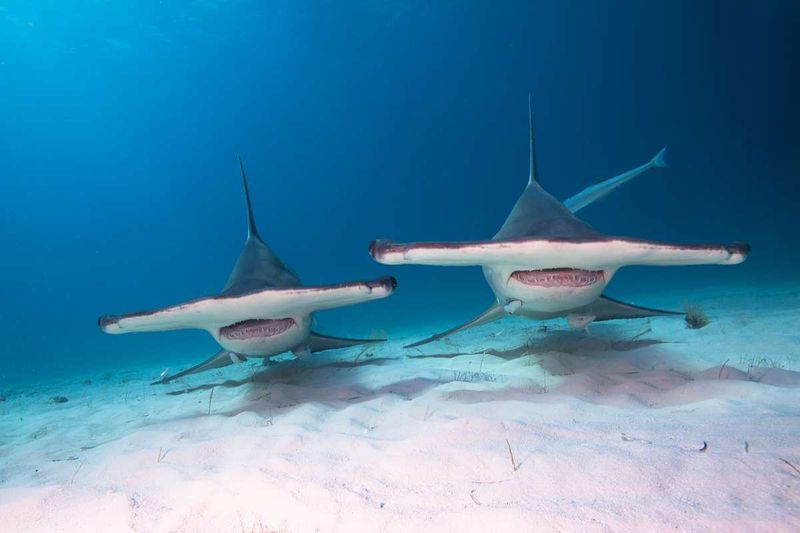
Hammerhead sharks face numerous threats, including overfishing and habitat destruction. Their fins are highly sought after in the fin trade, posing a significant risk to their populations.
Conservation efforts, such as marine protected areas and sustainable fishing practices, aim to safeguard these majestic creatures. Imagine a sanctuary where hammerheads swim freely, their future secured through human efforts.
Protecting them is crucial for maintaining ocean biodiversity and health, emphasizing our role in preserving marine life.
Ancient Origins

Hammerhead sharks have ancient origins, dating back millions of years. Fossil evidence suggests that they evolved distinct features early on, adapting to changing marine environments.
Picture a lineage stretching back through time, each generation honing the traits seen today. These ancient roots link them to a long history of survival and adaptation, shaping the modern hammerhead.
Their prehistoric past offers insight into the evolutionary processes that continue to influence life in the ocean.
Unique Species Variability

There are several species of hammerhead sharks, each with unique characteristics. From the large great hammerhead to the smaller bonnethead, these species vary in size, shape, and habitat preference.
This diversity allows hammerheads to inhabit diverse ecosystems, from coral reefs to open ocean. Imagine a family of sharks, each member distinct yet connected by shared traits.
Their species variability exemplifies adaptability and ecological niche specialization, underscoring the complexity of marine life.
Cultural Significance
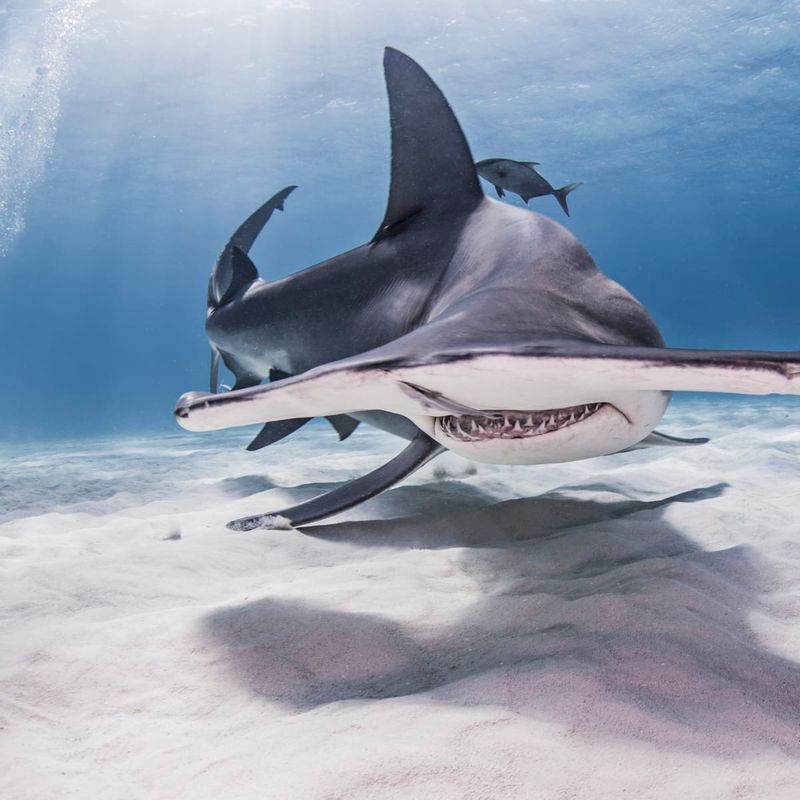
Hammerhead sharks hold cultural significance in various societies, particularly in Polynesian and Hawaiian cultures. They are often depicted in art, symbolizing strength and protection.
In these cultures, hammerheads are revered as guardians of the sea, their image etched in tattoos and carvings. Picture an art piece that captures the essence of the hammerhead, connecting the past with the present.
This cultural reverence reflects the deep connection between humans and nature, showcasing the shark’s impact beyond biology.
Elusive Behavior
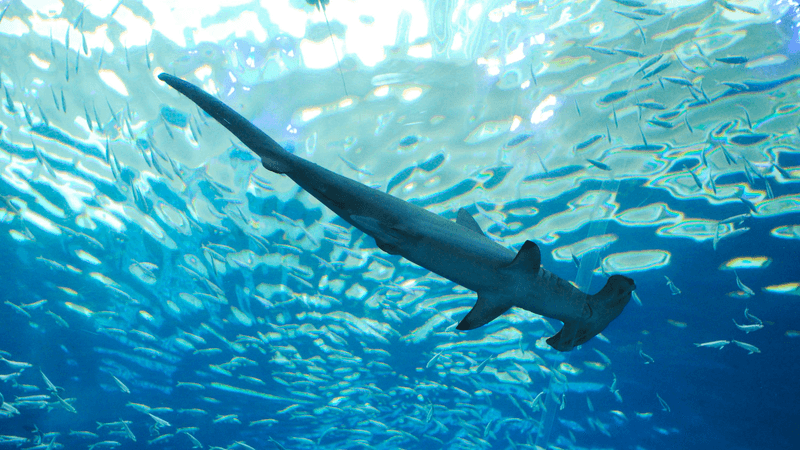
Hammerhead sharks are known for their elusive behavior, often disappearing into the ocean’s depths. This mysterious nature adds to their allure, as they glide silently through kelp forests or deep canyons.
Imagine a shadow beneath the waves, a ghostly presence that eludes easy capture or observation. Their elusive behavior is a reminder of the ocean’s vast unknowns, a symbol of the mysteries that continue to intrigue scientists and enthusiasts alike.
Distinctive Swimming Style

The swimming style of hammerhead sharks is both distinctive and efficient. With a gentle side-to-side motion, they glide through water with minimal effort, conserving energy over long distances.
Picture a graceful traveler, moving with fluid elegance through coral gardens and open seas. This swimming technique not only highlights their physical adaptations but also their role as nomads of the sea, embodying the harmony of form and function in aquatic life.
Role in the Ecosystem

Hammerhead sharks play a crucial role in maintaining the balance of marine ecosystems. As apex predators, they regulate species populations, ensuring healthy biodiversity.
Visualize a keystone species, whose presence supports the intricate web of ocean life. Their interactions with other marine creatures highlight the interconnectedness of ecosystems, where the survival of one affects the many.
Understanding their role emphasizes the importance of protecting these remarkable sharks for future generations.
Lifespan Surprises
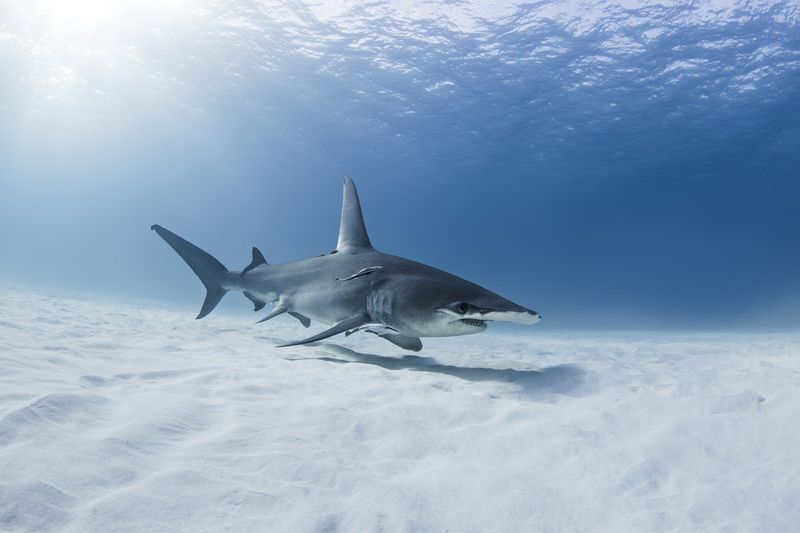
Hammerhead sharks can live surprisingly long lives in the wild. With a lifespan reaching up to 30 years, these apex predators have ample time to traverse the ocean’s vast expanses. Their journey through life is marked by a series of growth phases, each presenting its challenges and opportunities.
In the early years, hammerheads are vulnerable to predation and environmental shifts. Yet, their resilience and adaptability ensure they grow to become formidable hunters. As they age, their role in the ecosystem becomes increasingly vital, balancing fish populations and contributing to marine biodiversity.
The twilight years of a hammerhead’s life are spent in quieter waters, often near coral reefs or coastal areas. Here, they continue to hunt and patrol, maintaining their position as one of the ocean’s most respected predators.

